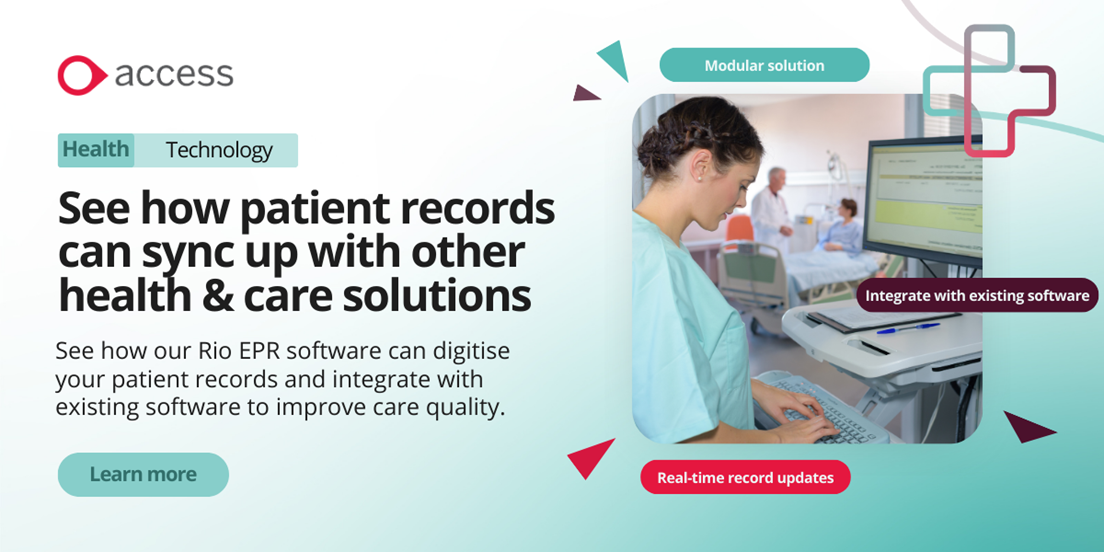EHR Implementation
Knowing how to implement EHR is the penultimate step in the onboarding process of adding electronic health records to your organisation’s operations.
By this point you should know what an electronic health record is, but if not you can read our article on EHR systems for a quick explanation. We’ve also covered the advantages and disadvantages of electronic medical records, and provided a primer on EHR integration and its importance. This research is important, because you can’t successfully implement electronic health records if you don’t know what purpose they serve and how they will support your organisation.
In this article we will cover the next step; providing a quick recap of patient records and the benefits of digitising them, before moving on to crux of the matter: EHR implementation and the best practices for successfully implementing EHR systems. We’ll also showcase the ways to measure success, so you can be sure your EHR implementation has gone well.

Digitising patient records
Digitising patient records is becoming commonplace all over the world, thanks to the greater functionality now available in these solutions to integrate with existing systems, and in many cases with established software too. In the UK, NHS England is driving digital transformation by making it mandatory that NHS trusts in the country are implementing EHR systems, but why this approach? What are the benefits of digital record solutions?
Electronic health records offer a centralised, singular record of a patient’s information; demographics, psychographics, and key contact details. They also track data regarding patient health; appointments, diagnoses, prescriptions, allergies, and much more.
By implementing an EHR system, clinicians and admin staff are able to spend less time on data input and management. This is important, because that time is slowing down the efficiency of the clinical workflow and moving people from inquiry to appointment to diagnosis to treatment. It’s also burdening staff at a time when they can’t afford to be wasting a moment. We have growing, ageing populations, and post-pandemic we’re dealing with the combination of heightened fear about illness, a backlog of treatment, and potential health deterioration as a result of Covid-19.
Digital records allow organisations – or the umbrella organisations above them – to hold one record and update that. This encourages greater accuracy, greater knowledge, and greater diagnosis and treatment as a result. This means less stress for a patient/client, less resource expenditure for a healthcare organisation, and hopefully a reduced chance of readmission in the future. Prevention, rather than just reaction.
What is EHR implementation?
EHR implementation is the act of a company onboarding the software. To digitise patient records, you need to speak with a solution provider – like The Access Group. Companies like ourselves make the software and sell it to a healthcare provider, but as part of that sale we typically have to implement the solution physically – on our servers or theirs – and tailor it to the organisation’s needs.
This means customising it, so it can accommodate the correct amount of users with the appropriate permission levels for access to different types of information and resources.
When was the first EHR implemented?
According to Nethealth.com and their history of electronic health records article, the first EHR solution was implemented in the 1960s on a very limited scale, and this continued to increase in scope slightly across the top echelon of US healthcare organisations – in partnership with the US government and presumably the US military – until the early 1990s when computer technology really started to leap forward in processing power, affordability, and suitability regarding the sheer size of a computer.
Who are the stakeholders in EHR implementation?
There are many stakeholders in the EHR implementation process. These roughly break out into four categories:
- Clinicians – doctors, nurses, consultants, specialists.
- Administration – office staff, personal assistants, finance team.
- Project Manager
- Board members
Clinicians are the obvious ones involved. Healthit.gov (The Office of the National Coordinator for Health Information Technology website) has an article on key stakeholders and lists an array including an EHR Team Lead, an Implementation Manager, a Physician Champion and a Nurse lead – just to name a few. Obviously this is very US-centric, but the reality is that there will need to be specific, qualified clinical staff members who actively take part in the implementation process to ensure it meets the needs of the clinicians on the ground. If it doesn’t suit their needs, what’s the point?
Administration is somewhat similar in that these are also people utilising the EHR system and therefore should have at least some representation. Finance certainly will have a part to play as they are the department funding the venture, but again a rep should be involved to reflect the needs and wants of staff.
The final two of a project manager – to coordinate all of the above – and board members (who sanction action) are to be expected, but for private healthcare providers (not just looking at the USA here) we should also consider health insurance companies a stakeholder and the patients themselves to be stakeholders. The input of patients is a little tricky to navigate, as it’s the clinicians actively using the solution rather than them, but they may have opinions about which solution to punt for on the basis of the care it can provide them and the wider community. Maybe Solution A can cooperate better with medication management software, but Solution B is a better deal for the healthcare provider. Healthcare is meant to be patient-centric after all; perhaps they should have their say.

Challenges of implementing EHR
There are many barriers to EHR implementation. These implementation barriers will occur for several reasons:
- Opposition from stakeholders
- A lack of human resources
- A lack of financial resources
- Confusion about strategy
- Poor team coordination
EHR implementation issues are likely to occur due to some form of shortfall. There are a lot of resources needed for EHR implementation. This is why planning is so important, but so too is perseverance; to keep overcoming difficulties to deliver the EHR.
For a detailed EHR implementation cost breakdown, please visit our article on the cost of electronic health records.
Benefits of EHR implementation
The benefits of EHR implementation are quite simple: the digitisation of patient records is a far more cost-effective way of managing records, a more efficient use of staff time in maintaining these records, and the greater accuracy from a longitudinal (singular and centralised) record leads to better diagnosis and treatment.
Again we have an existing article tackling these very points – a blog on the advantages and disadvantages of electronic medical records. This will give you a detailed rundown on the problems with EHR implementation but also the many benefits to be had. Spoiler alert – we’re quite fond of them.
How to implement EHR
If you ask a search engine to explain what is involved in implementing electronic medical records, you get a lot of results that shout out about there being four steps to successful EHR implementation.
Here are the four steps that we at Access feel are crucial to a successful EHR implementation:
- Planning
Diligence and proper preparation solve most of the issues surrounding deployment of software. Establish your priorities to keep the project orientated towards a target, know your deadlines and your budget, and establish a roadmap for how you’d like implementation to occur. You can then evaluate success afterwards thanks to the structured approach. - Collaboration
You need expert stakeholders involved; mainly clinical but some from other departments too. Establish communication channels – via messaging, emails, or in-person meetings. Once you know which people need to be involved, trust them to engage with the process and the solution provide to deliver your new EHR software and tailor it to your organisation’s needs. - Implementation
See the EHR implementation challenges If you don’t actually implement the EHR software then you haven’t succeeded. - Training
Staff need to be trained on using their new EHR software. A successful onboarding is one where all relevant staff are trained in an appropriate amount of time and to a high standard – ideally with ongoing support (at least in the earlier months) to assist with any teething problems as personnel find their feet with the new solution and working practices.
How long does it take to implement an EHR system?
The timeline for EHR implementation isn’t set. Deployment times vary for EHR systems, but pre-configured solutions like Access’ Rio Cloud software can be implemented in as little as 12 weeks.
Larger scale deployments, depending on software modules and the size of the user base however can and often do make this longer – sometimes taking up to 24 months. NHS EHR implementation would likely be on the longer timescale, due to the sheer size and scope of the national health service.

How to evaluate success of EHR implementation
The final point to touch upon is measuring the success of implementing your electronic health record software. How do you measure success? What metrics should you use?
Financial website RISE has an article on measuring the success of EHR implementation. In their piece, they point to the tracking of key performance indicators (KPIs) as the default method of assessment. This would include things such as:
- Training time – Did staff learn? Did they need more time?
- Optimisation – Could your provider tailor the software to your needs?
- Scale – Could your provider meet the registered user requirements?
- Data Migration – Was this performed without loss or damage to vital patient records?
- Downtime – How long were your services disrupted for, or to what extent were they?
- Security – Have you had any issues with unauthorised access (internal or external) to private patient records?
RISE do list more than these, but they also list things that we believe to be about the success of the electronic health records themselves, like a return on investment and clinical improvements, which aren’t explicitly related to the implementation of the software itself.
We would also add one additional metric:
Employee Onboarding – Were relevant staff willing to engage with the implementation process or did they have reservations? Were these about EHRs in general or the specifics of this software deployment from this solutions provider?
How to implement an EHR solution – in conclusion
We know the benefits EHR solutions can have already. This article is strictly here to be a guide for you, the reader, to help you along the implementation process – from research to delivery. We hope this has been an insightful read, but for more information on EHR solutions why not speak to our Rio software team to see if our Rio EPR and Rio Cloud solutions might be right for you.


